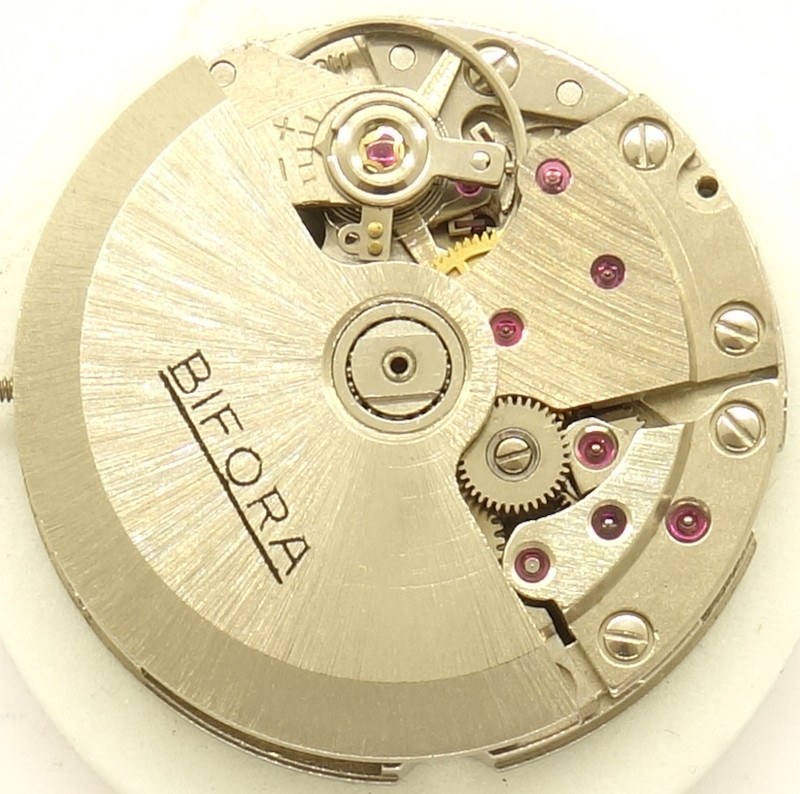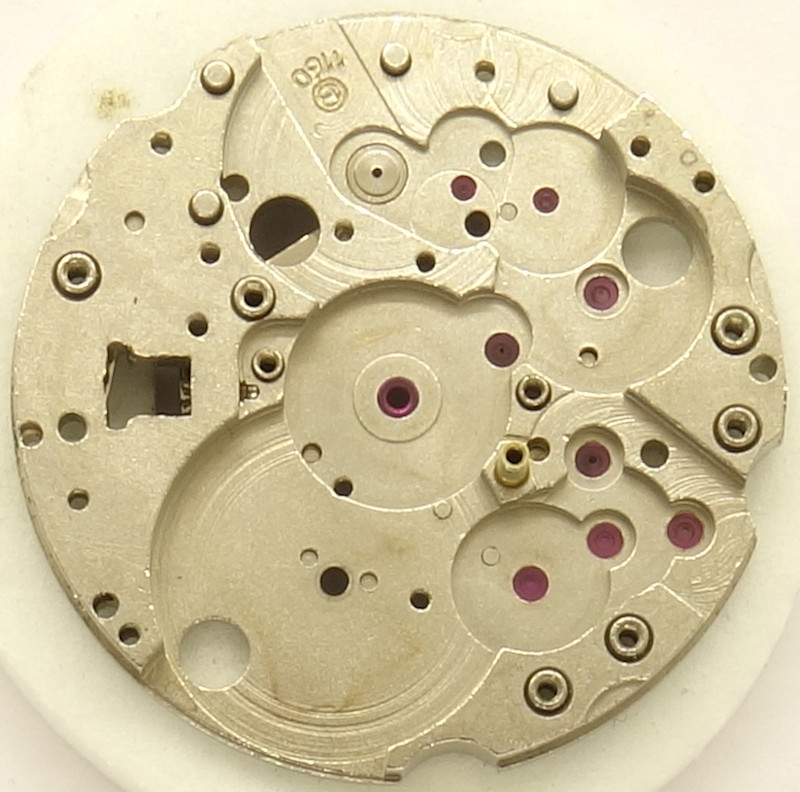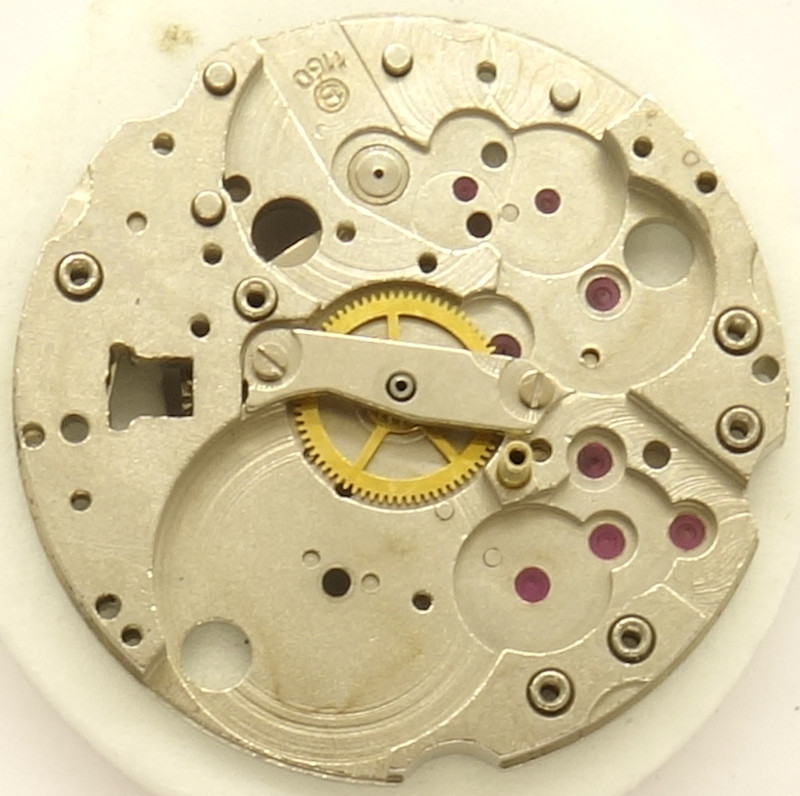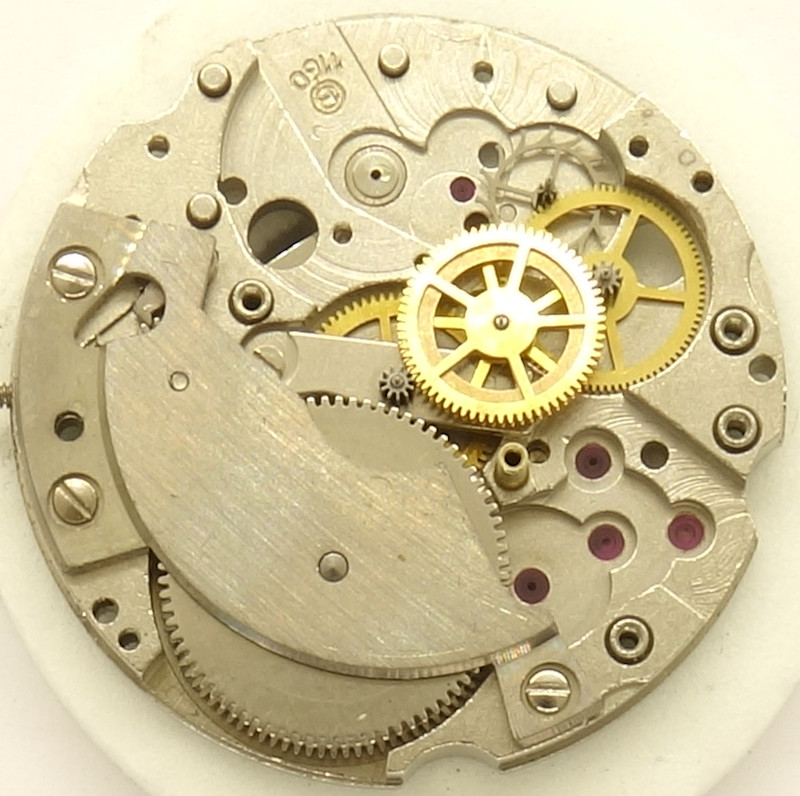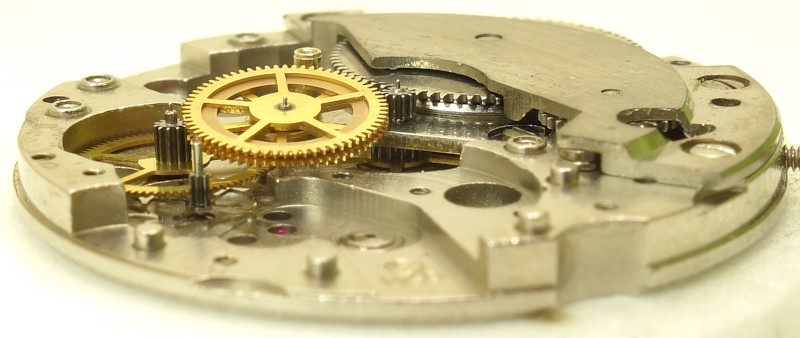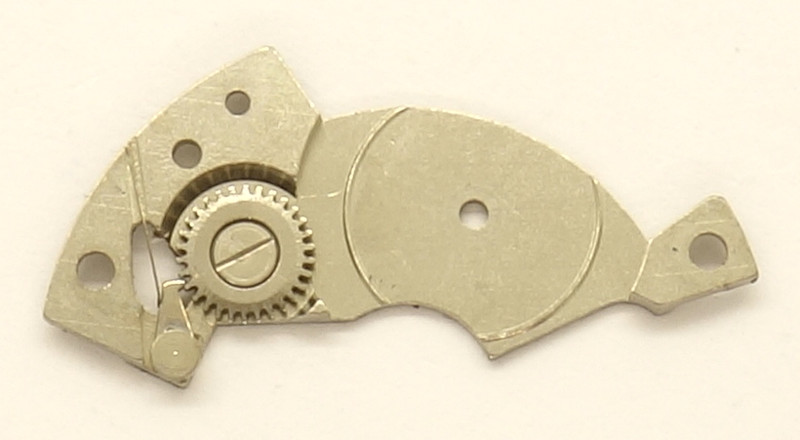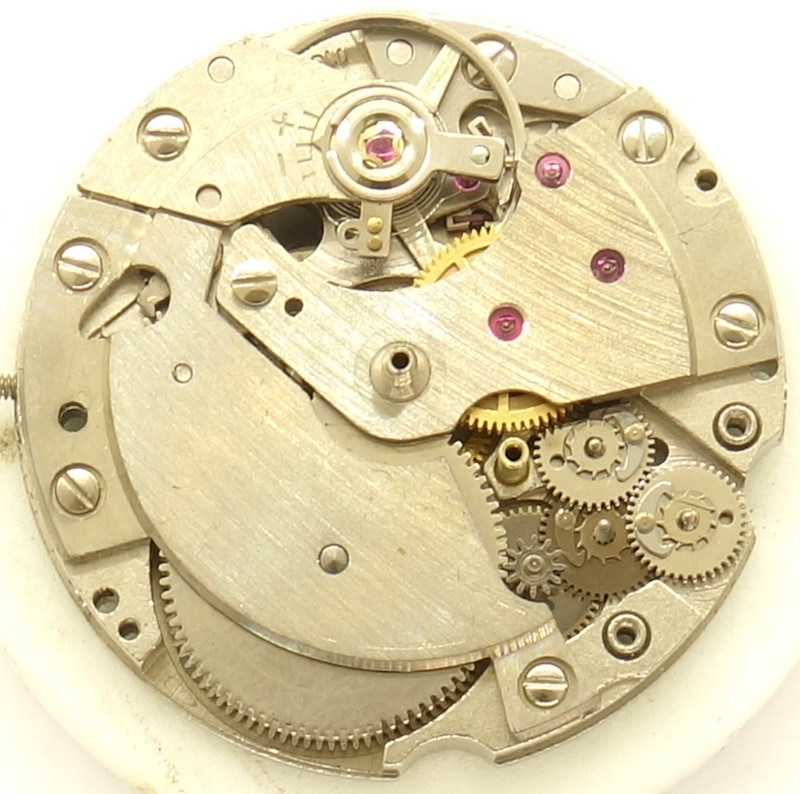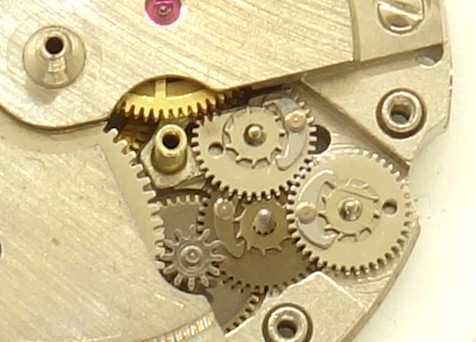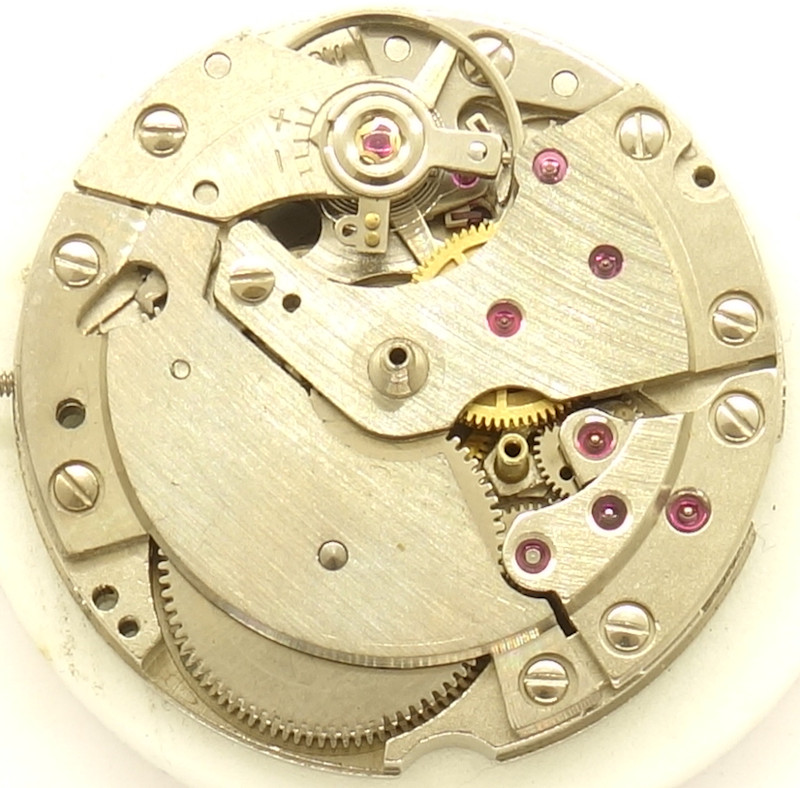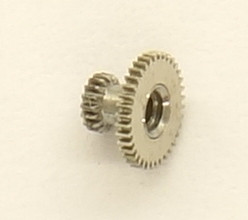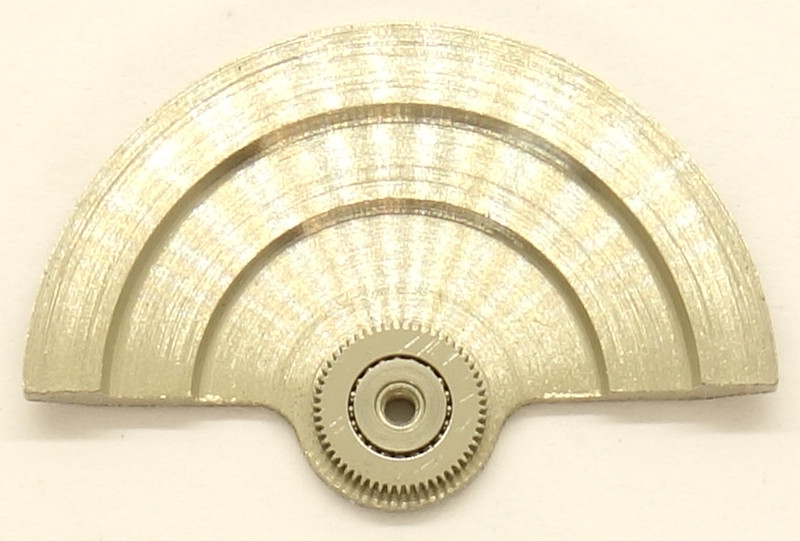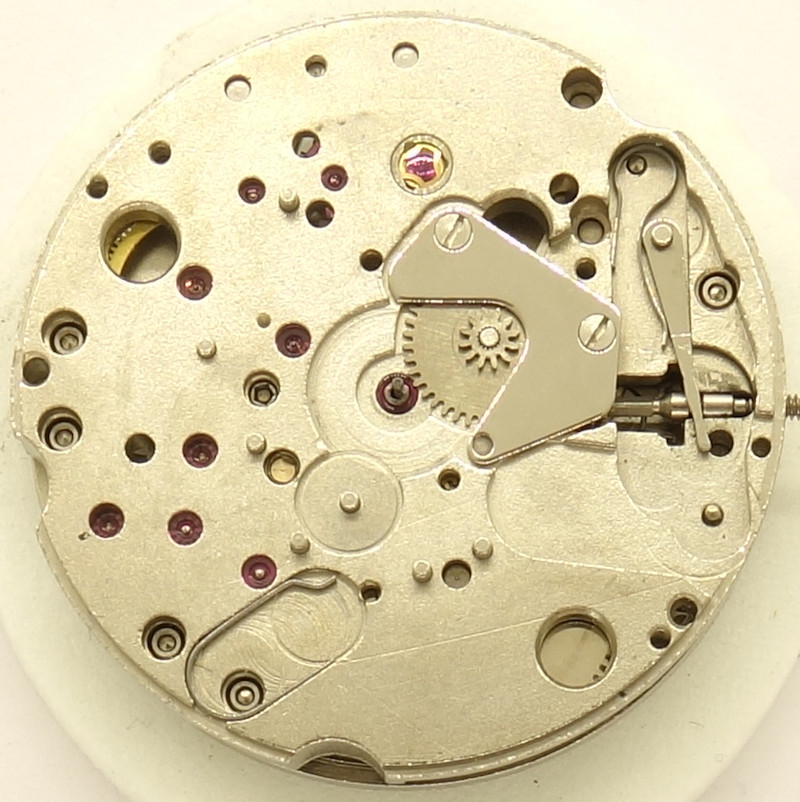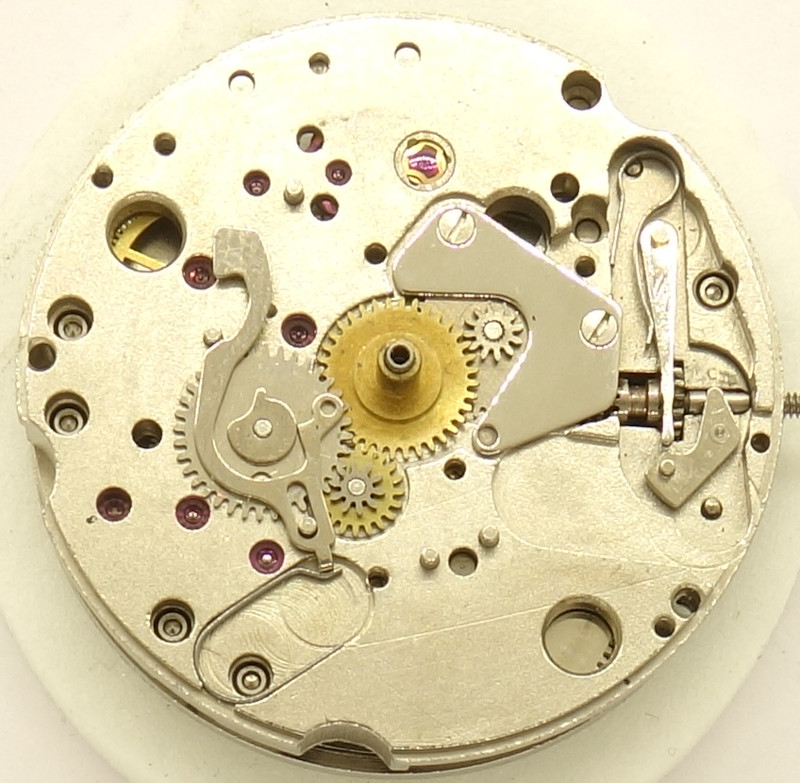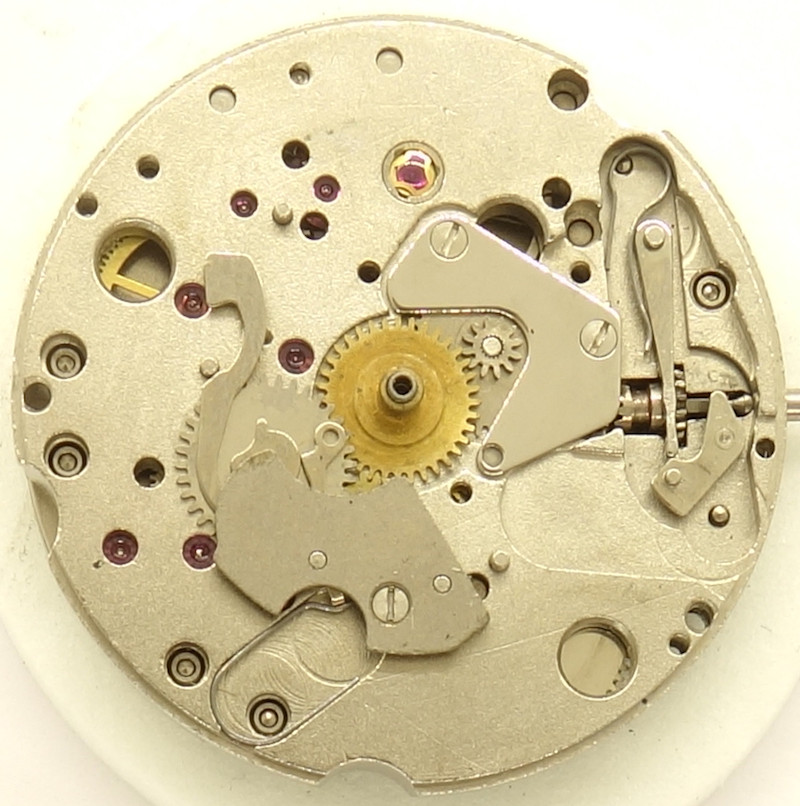Description
Bifora was not only the first german manufacturer of selfwinding movements, but in the year 1980 one of the last.
The caliber Bifora 1160 marks the climax and also the end of those movements from the Bidlingmaier manufactury. It was launched in 1971 and built until 1980.
The 11 1/2 ligne base plate already shows, that we don’t have a conventional selfwinding movement here, but that it is construction, where the selfwinding part is seamlessly integrated into the movement to save height.
The center minute wheel is still classical.
The rest of the gear train is also common standard: The mainspring barrel drives the center minute wheel, followed by third wheel, a rather large seconds wheel and finally the steel escape wheel.
The third wheel is a double one to ensure, that the indirectly driven center seconds indication does not flap.
The balance assembly is pretty unspectacular. Its anular balance beats with 21600 A/h, has got three legs and is beared in two inhouse Bishock shock protecting bearings.
The adjustment can be made only directly at the hairspring key, which fortunately has got a tiny hole for a better grip.
As excapement, a swiss pallet lever type is used.
The crown wheel and the ratchet are located on the inner side of the mainspring barrel bridge, which saves a little height.
The speciality of the Bifora 1160 is, that the gear train for the selfwinding mechanism is integrated into the movement and thus adds no extra height to it.
Three pawl changers in the selfwinding gear train is pretty unusual.
The first two (starting from the oscillating weight) work as a mechanical rectifier and are responsible, that the following reduction wheel always turns in the same direction no matter in what direction the oscillating weight turns.
The first reducation wheel is at the same time the third pawl changer wheel and is responsible that on manual winding, the selfwinding gear train is disengaged.
The driving wheel from the oscillating weight to the first reduction wheel is beared on a hollow axle.
The Bifora 1160 uses a ball beared oscillating weight. This ensures a long-term stable bearing and minimizes the probability of an axle beakage.
More modern than with a ball bearing was not possible at that time to build a selfwinding movement.
Unfortunately, the specimen shown here is incomplete as for the dial side. It is certain, that a yoke winding system was used, but how exactly it was constructed cannot be said.
The date ring is advanced (probably instantly at midnight) by a very elaborate switching mechanism with a driven switching finger.
Since the calendar mechanism is incomplete, too, its also cannot be said, how exactly it works, and if it has got a quickset mechanism and how that works.
So sad, that this very modern Bifora selfwinding movement marked the end of their development of selfwinding movements.
It was the quartz crisis in the 1970s, which did not only stop the further evolution of mechanicam movement, but also brought the end to that traditional manufacturer.
Technical data
| Manufacturer: | Bifora |
| Caliber: | 1160 |
| Caliber base: | Bifora 116 |
| Size: | 11 1/2''' (measured: 25,5mm) |
| A/h: | 21600 |
| Number of jewels: | 24 |
| Escapement: | Pallet lever |
| Balance types: |
Nickel anular balance (three legs) |
| Shock protection(s): |
Bidlingmaier (Bifora) |
| Balance bearing / direction hairspring: | Clockwise |
| Moveable stud: | yes |
| Adjust mechanism: | Hairspring key |
| Construction: |
|
| Construction type: | solid construction |
| Winding mechanism: | yoke winding system |
| Features: |
|
| Production period: | 1971 - 1980 |
| References: |
Flume: K3 N1 1 |
| Production years: | 1971-1980 |
| Inventory number: | 21040 |
